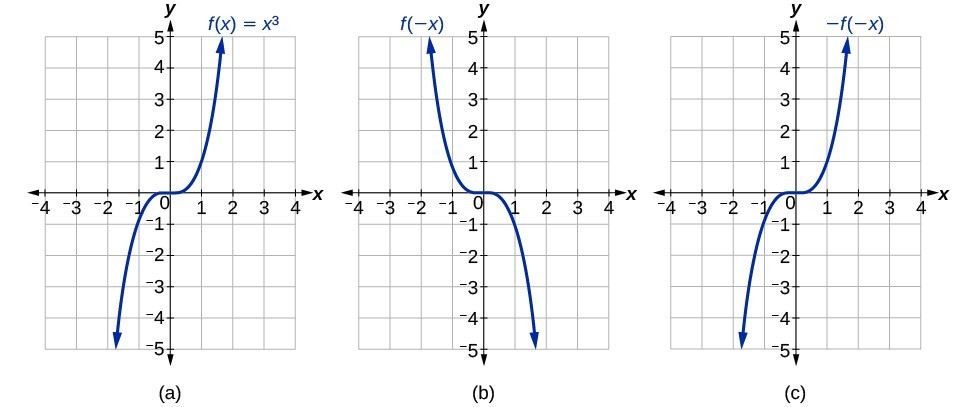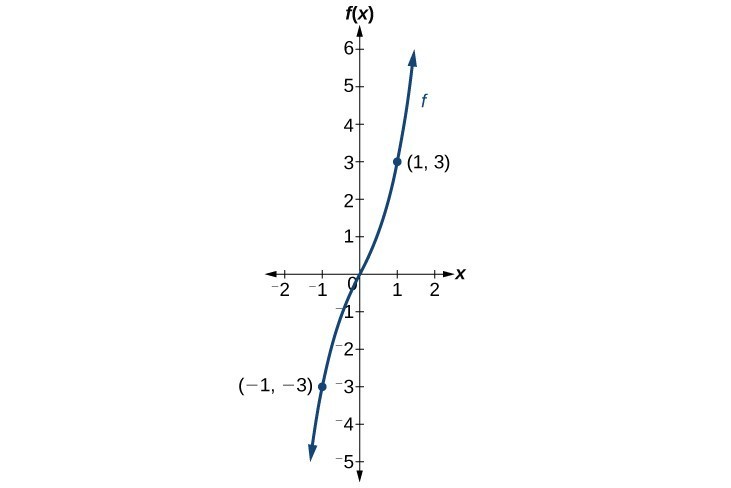- Determine whether a function is even, odd, or neither
Determine Whether a Functions is Even, Odd, or Neither
Functions often display specific symmetries that define their characteristics. For instance:
- Even Functions
- A function [latex]f(x)[/latex] is called even if it is symmetric about the [latex]y[/latex]-axis. This means [latex]f(−x)=f(x)[/latex] for all [latex]x[/latex].
- Graphically, this symmetry means that if the graph of the function is folded along the [latex]y[/latex]-axis, the two halves will match exactly.
- Examples include [latex]f(x)=x^2[/latex] or [latex]f(x)=∣x∣[/latex], where horizontal reflections produce the original graph.
- Odd Functions
- A function [latex]f(x)[/latex] is called odd if it has rotational symmetry about the origin, which means [latex]f(−x)=−f(x)[/latex] for all [latex]x[/latex].
- This property implies that if the function’s graph is rotated [latex]180[/latex] degrees about the origin, it will coincide with its original shape.
- An example is [latex]f(x)=x^3[/latex], where reflecting the graph both horizontally and vertically reproduces the original graph.
The function [latex]f(x)=x^3[/latex] demonstrates odd symmetry. As shown in the graphs below:

even and odd functions
A function is called an even function if for every input [latex]x[/latex],
[latex]f\left(x\right)=f\left(-x\right)[/latex]
The graph of an even function is symmetric about the [latex]y\text{-}[/latex] axis.
A function is called an odd function if for every input [latex]x[/latex],
[latex]f\left(x\right)=-f\left(-x\right)[/latex]
The graph of an odd function is symmetric about the origin.
A function can be neither even nor odd if it does not exhibit either symmetry. For example, [latex]f\left(x\right)={2}^{x}[/latex] is neither even nor odd. Also, the only function that is both even and odd is the constant function [latex]f\left(x\right)=0[/latex].
How To: Determine If a Function is Even, Odd, or Neither
- Check for Even Symmetry:
- Evaluate [latex]f(−x)[/latex] and compare it with [latex]f(x)[/latex]
- If [latex]f(−x)=f(x)[/latex] for all values of [latex]x[/latex] in the domain of the function, then the function is even.
- Check for Odd Symmetry:
- Evaluate [latex]f(−x)[/latex] and compare it with [latex]f(x)[/latex]
- If [latex]f(−x)=−f(x)[/latex] for all values of [latex]x[/latex], then the function is odd.
- Neither Even nor Odd: If neither of the above conditions is met, the function is neither even nor odd.
Is the function [latex]f\left(x\right)={x}^{3}+2x[/latex] even, odd, or neither?
Is the function [latex]f\left(s\right)={s}^{4}+3{s}^{2}+7[/latex] even, odd, or neither?
You can view the transcript for “Introduction to Odd and Even Functions” here (opens in new window).
